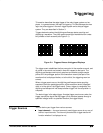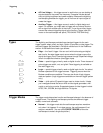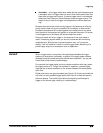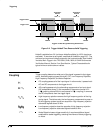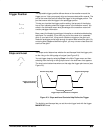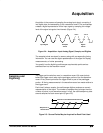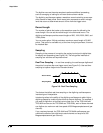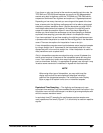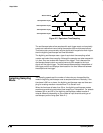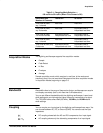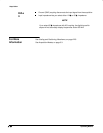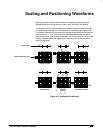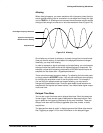
Acquisition
Operating Basics
The digitizer can use the extra samples to perform additional processing,
such as averaging or looking for minimum and maximum values.
The digitizing oscilloscope creates a waveform record containing a user-spe-
cified number of data points. Each record point represents a certain voltage
level that occurs a determined amount of time from the trigger event.
Record Length
The number of points that make up the waveform record is defined by the
record length. You can set the record length in the Horizontal menu. The
digitizing oscilloscope provides record lengths of 500, 1000, 2500, 5000, and
15000 points.
You can order option 1M that provides a maximum record length of 50,000
points. That option is available only at the time of original purchase; it cannot
be installed later.
Sampling
Sampling is the process of converting the analog input signal to digital data
for display and processing (see Figure 2-6). The two general methods of
sampling are
real-time
and
equivalent-time
.
Real-Time Sampling — In real-time sampling, the oscilloscope digitizes all
the points it acquires after one trigger event (see Figure 2-6). Use real-time
sampling to capture single-shot or transient events.
Sampling Rate
Record Points
Figure 2-6: Real-Time Sampling
Two factors that affect real-time sampling on the digitizing oscilloscope are
interleaving
and
interpolation
.
Interleaving
refers to the ability of the digitizing oscilloscope to attain higher
digitizing speeds by combining the efforts of several digitizers. For example, if
you want to digitize on all channels at one time (four on the TDS 644A and
TDS 640A and two on the TDS 524A and TDS 620A), each of those channels
can digitize at a maximum real-time speed of 250 Megasamples/second (per
channel).
If you use two channels, the TDS 644A and TDS 640A oscilloscopes can
combine the efforts of two digitizers to each channel and acquire at 500
Megasamples/second (per channel).




